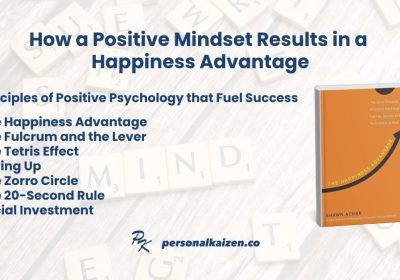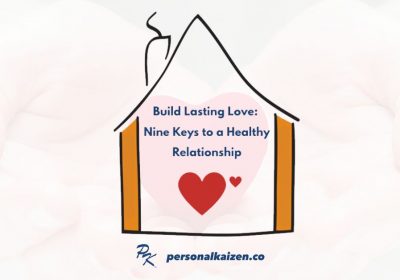
Kaizen is a Japanese word that translates to “change for the good.” Kaizen results from making many small improvements to a system or process. The accumulated improvements eventually lead to significant results.
Kaizen applies to individuals in the same way it applies to organizations. The Personal Kaizen community was formed to help us share tips, hacks, and habits with one another to maximize our life.
Rule 9 of our 10 Rules for Life is to avoid decision fatigue by developing good habits and routines. Here is our simple process.
What are Your Objectives?
The first step is determining your improvement objectives. In what areas of your life do you want to improve? Why? What are the key results you are targeting?
For this post about developing good habits, we will use this objective:
“to get in better physical shape and feel more fit.”
Evaluate Current Behaviors
Once you have determined your objective, the next step is to identify and rank your current behaviors that are contributing (or not contributing) towards your objective.
First, begin with a simple brainstorming session identifying behaviors that support your objective. Write the positive behaviors on post-it notes. For example, if your current behavior is having an ice cream cone every day at lunch, write “stop eating ice cream at lunch” as the positive behavior. If you get stuck, ask a friend or loved one for their input.
Remember that these are behaviors (actions) and not outcomes or aspirations. See the example behaviors on the post-it notes below.
Next, place each post-it note behavior on a PICK chart, with your rating in the dimensions of Effort and Impact. See the example below.
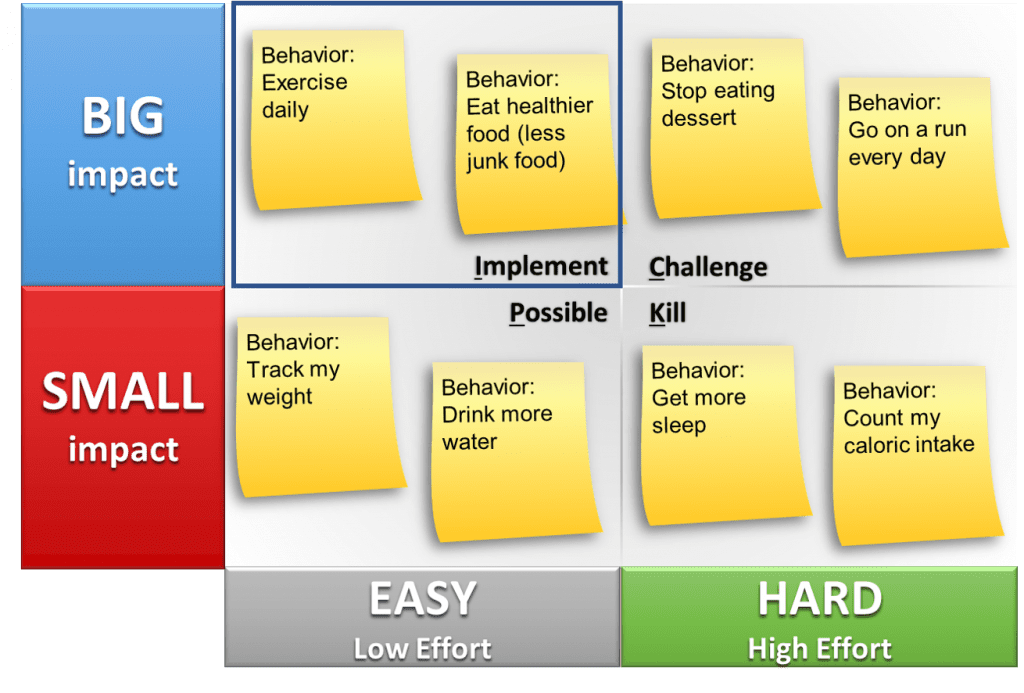
A tip on rating your behaviors:
- For impact: “How effective is this behavior in meeting my objective?” Make your best guess, if you find out later you were wrong then you can adjust.
- For effort ask: “Can I get myself to do this?” Please be honest, it doesn’t help if you lie to yourself . . .
The third and final step is to select behaviors from the “Implement” quadrant (big impact, easy to do) and then the “Possible” quadrant. Pick only 3-4 total, and ignore the behaviors in the other quadrants. We will form a plan next that turns these behaviors into habits.
The four behaviors we selected from the PICK chart above are:
- Exercise daily
- Eat better food (less junk food)
- Track my weight
- Drink more water
You are going to make these behaviors into habits by following our three-step process for developing good habits.
Simplify the Behavior
The first step is to make each behavior easier and simpler for you to do. There are three approaches:
- Increase your skills: For example, buy a book about “healthy eating” or research simple exercise routines that will build strength and reduce your weight.
- Use tools and resources: For example, buy a digital scale that outputs the data to a smartphone or buy a nice reusable water bottle.
- Make the behavior smaller and easier: Once you have increased your skills and used tools and resources, look to simplify each behavior. Here are some ways to simplify the “Drink more water” behavior:
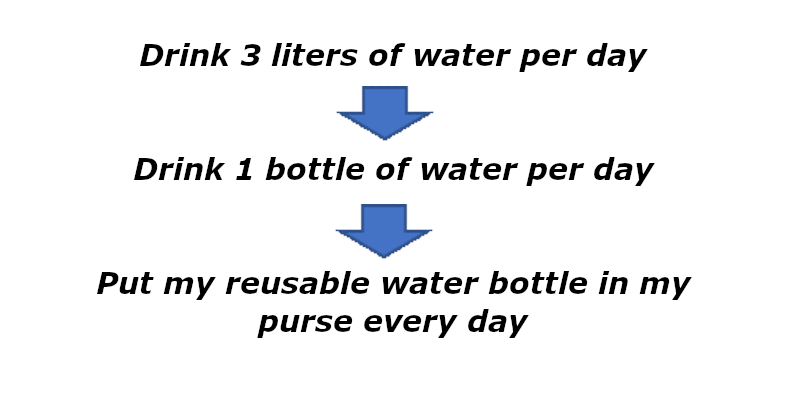
Find an Anchor
You will need an anchor to help develop your new habit. An anchor is an existing routine or event that will remind you of your simplified behavior above. This is one of the keys to turning your desired behavior into a habit.
I suggest linking your anchor with your behavior into a Habit Statement. Here are a few examples:
- When I put my wallet in my purse in the morning, I will add my reusable water bottle.
- While I wait for my shower water to warm up, I will weigh myself.
- While I brush my teeth in the evening, I will record my exercise for the day.
- When I park my car at the store, I will park in the back lot so I have a longer walk to the front door.
Pick a Celebration
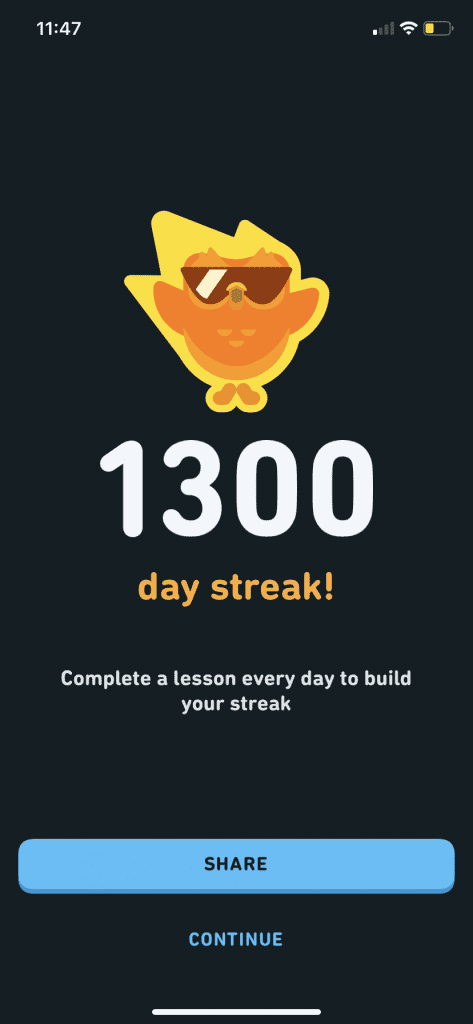
The final key to developing good habits is linking the completion of the new behavior to a positive emotion.
Celebrating releases hormones in your brain to “wire in” the new habit. Don’t be tempted to skip this step as I was – it really works! Here are several examples of celebrations you can use:
- Say “yes” out loud
- Smile
- Do a fist pump in the air
- Say or think, “Good job!”
- Do your own version of a “happy dance”
Currently, my preferred celebration is to record that I have completed the behavior. This helps me track my progress and makes me want to continue the behavior so I don’t break the chain. The language learning App DuoLingo helps do this for you, as shown to the right.
Developing Good Habits
Here are additional examples of Habit Statements. Feel free to adapt them so they work for you. Note how each habit has an anchor, a simple step, and a way to celebrate and lock in the habit.
- When I brush my teeth at night, I check off my exercise for the day. If I haven’t done pushups already, I will do at least one pushup so I don’t break the chain.
- When I need to leave for work early the next morning, I will prepare a healthy bagged lunch the night before.
- When I plan to exercise in the morning, I will get out exercise clothes the night before and put them on when I wake up.
Habits take some time to develop, so make sure you keep them small and simple! For example, it is better to set the goal of a single push-up. Many days you will feel good and do more, but if you are extra tired at least you can do your one, not break the chain, and feel successful.
You should also experiment with anchors until you find ones that work for you. Use simple tools and reminders – for example, if my new habit is to: “Stretch on the floor for one minute when I turn on the TV” it is helpful to add a sticker on your remote control that reminds you to do this.


